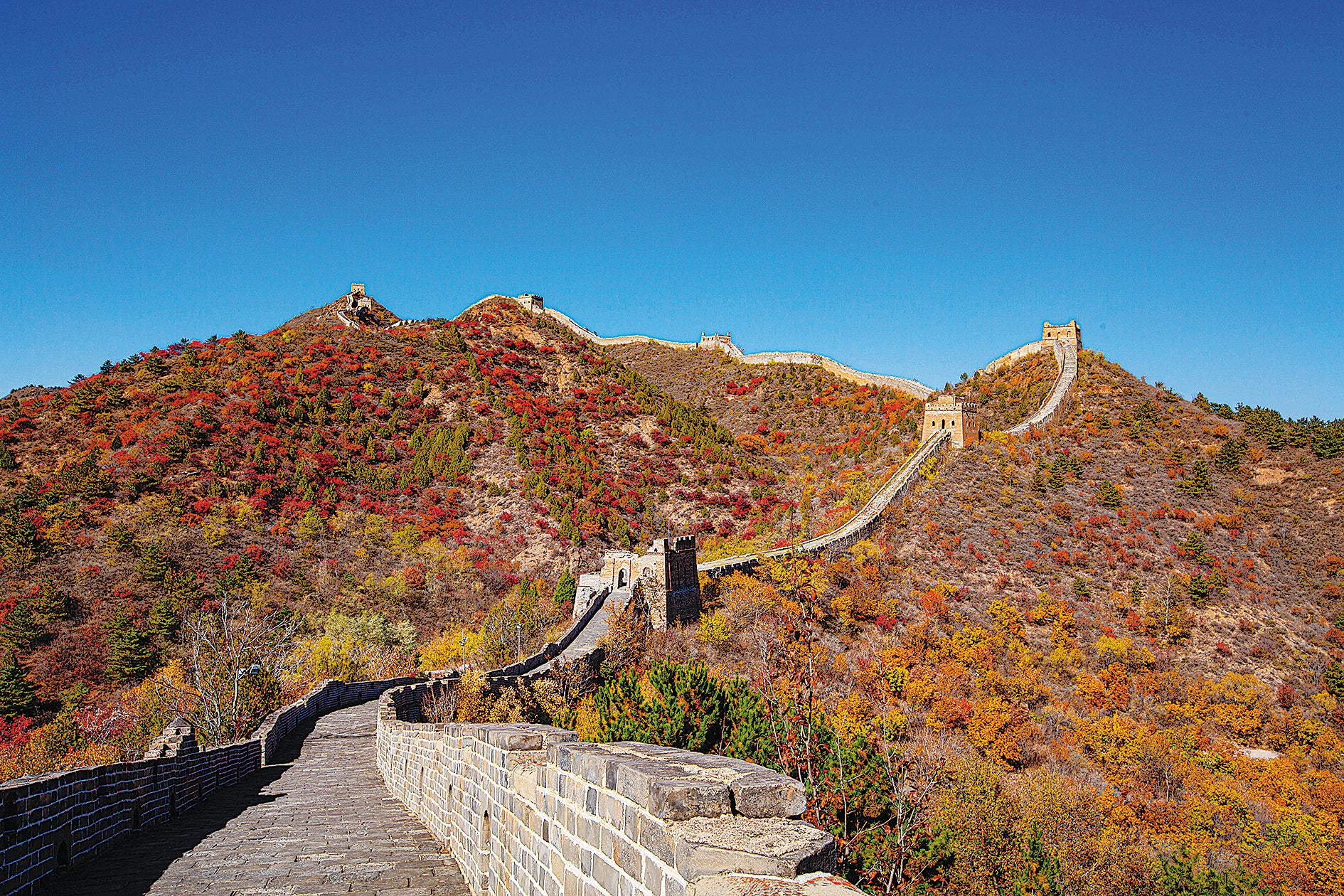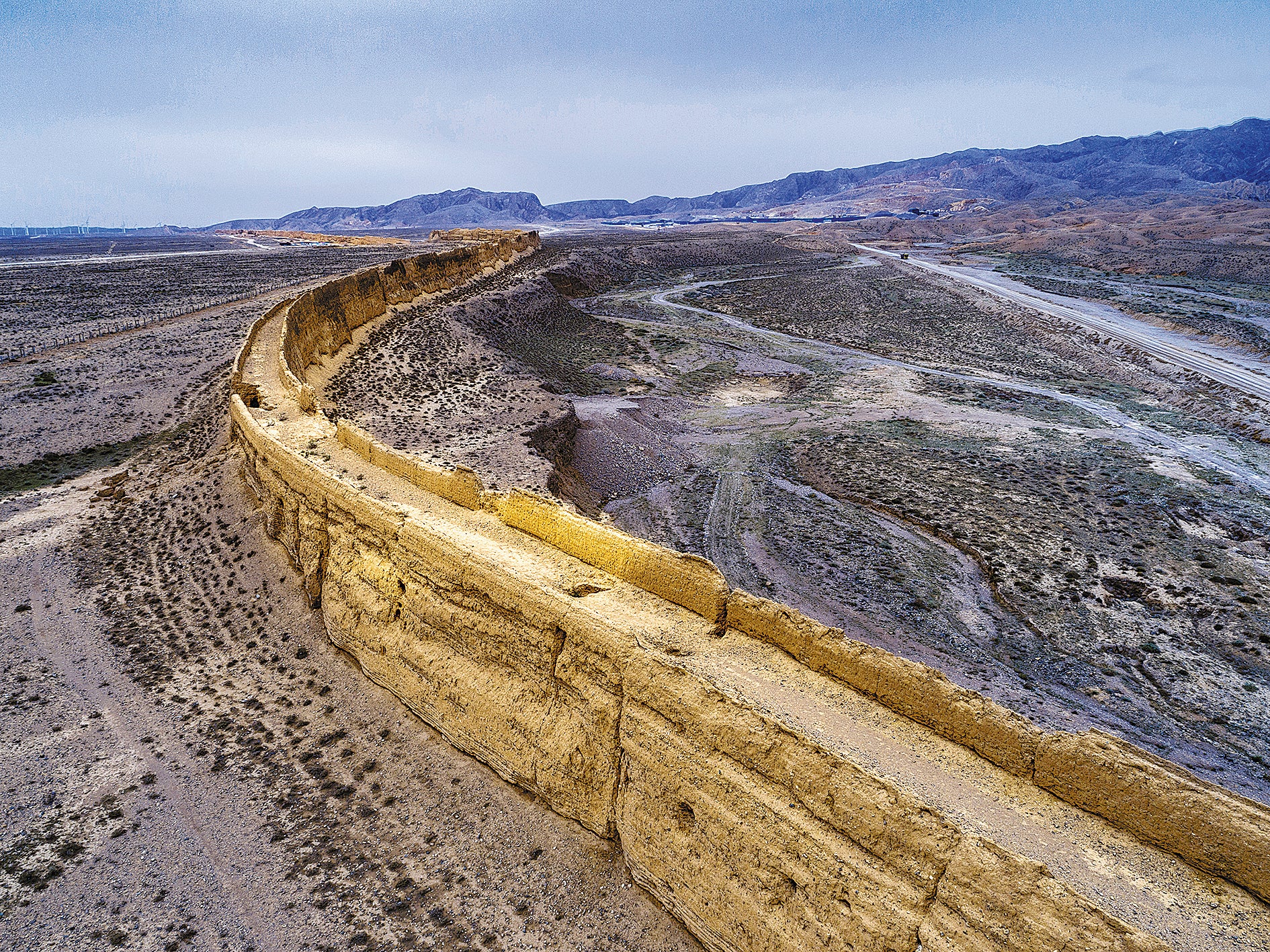The great defender
THE ARTICLES ON THESE PAGES ARE PRODUCED BY CHINA DAILY, WHICH TAKES SOLE RESPONSIBILITY FOR THE CONTENTS

One of the largest construction projects in the history of mankind, the Great Wall is the epitome of ancient Chinese wisdom and perseverance. It was an awe-inspiring defence strategy that spanned dynasties and remains an eloquent testimony to the edifice of Chinese civilisation.
The earliest sections of the Great Wall were built by the ancient Chinese people to keep invaders at bay. After the Warring States Period (475-221 BC), the first emperor of China, Qinshihuang, wiped out six states and established the Qin Dynasty (221-206 BC). He ordered consolidation and extension of the Great Wall to protect his territory from his arch enemy, the Xiongnu in the north.
In the 2,000 years that followed, and until the Ming Dynasty (1368-1644), this effective military master plan was applied by rulers of different ethnicities.
From Northeast China’s Liaoning province to swathes of arid land in Northwest China’s Xinjiang Uygur autonomous region, from Central China’s Henan province to the border between China and Mongolia in the north, the incredible fortifications ran through rugged mountains, vast grasslands and remote deserts.
In 1987, the Great Wall was listed as a UNESCO World Heritage Site. More recently, a nationwide survey of different sections of the Great Wall found that its total length of about 13,171 miles surpassed the distance between the Earth’s two poles.
Among the 15 provincial-level administrative regions through which the Great Wall runs, the Inner Mongolia autonomous region boasts the most extensive fortifications, adding up to 4,704 miles across 80 banners and counties.
Construction of the bulwark in Inner Mongolia spanned more than 2,000 years, with the earliest section built in the 4th century BC by the king of the state of Zhao. “The Great Wall of Zhao was a military installation to defend the agricultural state from nomadic powers in the north,” says Zhang Wenping, deputy director of Inner Mongolia Museum.

Such coexistence of agrarian dynasties and nomadic powers lasted for more than 2,000 years, Zhang says.
“Rulers of the Central China Plains built the Great Wall along the Yanshan and Yinshan mountains. The latter lies in the central part of Inner Mongolia, forming a natural boundary between agrarian and nomadic civilisations in ancient times,” he adds.
The Great Wall helped rulers of the Central China Plains secure a relatively peaceful environment for development of an agricultural civilisation.
“During some historical periods, when nomadic powers broke the defence of the Great Wall and dominated the Central China Plains, the nomadic people became a part of the more influential agricultural civilisation. Thus, the Great Wall played a key role in the progress of Chinese history,” Zhang says.
Building the extensive bulwark – sometimes on dangerous cliffs – and dispatching garrisons cost too much money and labour. Bricks, stones and lime were carried along the mountain ridges on shoulders or by using handcarts and rolling logs. Sometimes, donkeys and goats were used to ferry raw materials.
As both troops and commoners ventured into uncharted territory for security and farming purposes, people of different ethnicities exchanged goods and traditions. “In other words, areas along the Great Wall became a melting pot of cultures and civilisations,” Zhang says.
However strong it is, the Great Wall, made of stones, lime, bricks, wood or rose willow, still faced wind erosion and people’s influence over centuries so that in many sections, only obscure ruins remain.
The Ming Great Wall is in relatively better shape than the sections built by previous dynasties. Some portions are still magnificent, such as the Badaling section in Beijing, which has hosted many world dignitaries, including the late Queen Elizabeth II and former US president Richard Nixon.
